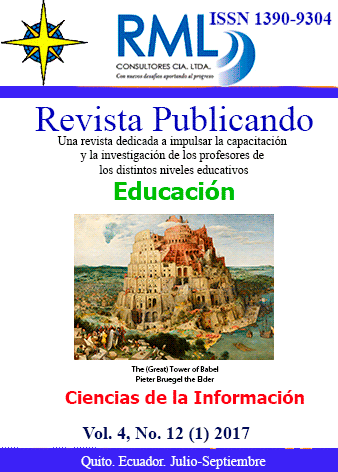Abstract
There have been made a wide variety of studies in reference to phonological interferences mainly between two languages. Analysis and comparisons of phonological aspects of two languages considered as mother tongues interfering with the speech production of a third language, have been carried out principally in Perú. This study is aimed to identify the phonological language interferences from both Kichwa and Spanish over English as a foreign language. In order to get this information, a group of 24 students from A2 English classes were recorded. They cooperated with three recordings each in three situations. These students belonged to specific indigenous ethnic groups of the region who manage both Kichwa and Spanish languages. This command of languages is derived mostly from their parents Kichwa teaching and the Spanish social contact to which they have been exposed. These recordings were transcribed and the phonemes belonging to: /b/ /v/, /th/ /d/, /sh/ /ll/ phonemes, were analyzed. A quantitative and qualitative system was applied to process the information obtained from the students. These results were used to set a chart with the most common phonological interferences in this group of consonants. The conclusions synthesized the results based on the comparative analysis of language production when speaking the English language.
References
Molina, G. M., Alfaro, H. P., et al.Alfaro, S. P. (2017). Design and validation of a rubric to assess the use of american psychological association style in scientific articles. NAER: Journal of new approaches in educational research, 6(1), 78-86
andernach, B. J., Zafonte, M., et al.Taylor, C. (2016). Instructional strategies to improve college students' apa style writing. International Journal of Teaching and Learning in Higher Education, 27(3), 407-412.
Flege, J., Frieda, E., & Nozawa, T. (1997). Amount of native-language (L1) use affects the pronunciation of an L2. Journal Of Phonetics, 25(2), 169-186. http://dx.doi.org/10.1006/jpho.1996.0040
Bolton, K., & Kachru, B. (2006). World Englishes: Critical Concepts in Linguistics, Volume III (p. 242). London: Routledge.
Bavdekar, S.B. (2016) Enhance the value of a research paper Choosing the right references and writing them accurately. Journal of The Association of Physicians of India, 64, 66.
You are free to:
Share — copy and redistribute the material in any medium or format.
Adapt — remix, transform, and build upon the material.
The licensor cannot revoke these freedoms as long as you follow the license terms.
Under the following terms:
Attribution — You must give appropriate credit, provide a link to the license, and indicate if changes were made. You may do so in any reasonable manner, but not in any way that suggests the licensor endorses you or your use.
NonCommercial — You may not use the material for commercial purposes.
ShareAlike — If you remix, transform, or build upon the material, you must distribute your contributions under the same license as the original.
No additional restrictions — You may not apply legal terms or technological measures that legally restrict others from doing anything the license permits.
